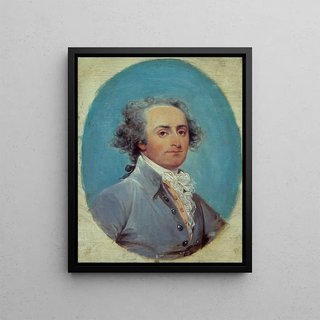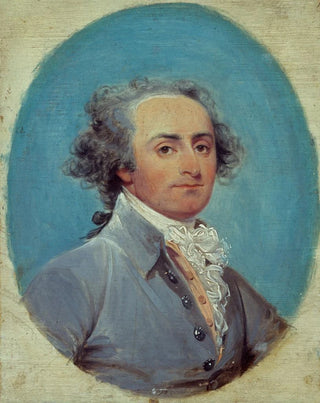Art print | Joseph Ceracchi - John Trumbull Source: Reproduction | Joseph Ceracchi - John Trumbull


View from behind

Frame (optional)
In the vast panorama of art history, certain works emerge as silent witnesses to their era, capturing the essence of a moment or an idea. The art print Joseph Ceracchi - John Trumbull is one of those creations that fascinate and provoke thought. Created at the end of the 18th century, this piece not only showcases the exceptional talent of its creator but also reflects the richness of a vibrant historical context. Through this portrait, Ceracchi pays tribute to John Trumbull, an American painter and historian, whose contributions to art and collective memory are indelible. This painting, both intimate and monumental, invites us to delve into a pivotal period of American history, where art and politics intertwine inextricably.
Style and uniqueness of the work
The art print Joseph Ceracchi - John Trumbull stands out for its neoclassical style, characterized by a pursuit of ideal beauty and formal rigor. Ceracchi, a renowned sculptor, manages to infuse his work with emotional depth while respecting the canons of the time. Trumbull’s face, imbued with reflective serenity, seems to transcend time, inviting the viewer to contemplate not only the man but also the artist engaged in narrating American history. The meticulous details, such as the drapery of Trumbull’s attire, demonstrate exceptional craftsmanship and a concern for realism. The carefully orchestrated light highlights facial features and emphasizes the artist’s expression, creating a subtle dialogue between shadow and light. This work is not merely a portrait; it is a celebration of national and artistic identity, an invitation to reflect on the role of art in shaping collective memories.
The artist and his influence
Joseph Ceracchi, born in Italy, established himself in the American art scene of the 18th century through his talent and vision. Arriving in America at a time when the country was seeking to define its identity, he played a crucial role in the emergence of a national art. By sculpting emblematic figures

Matte finish

View from behind

Frame (optional)
In the vast panorama of art history, certain works emerge as silent witnesses to their era, capturing the essence of a moment or an idea. The art print Joseph Ceracchi - John Trumbull is one of those creations that fascinate and provoke thought. Created at the end of the 18th century, this piece not only showcases the exceptional talent of its creator but also reflects the richness of a vibrant historical context. Through this portrait, Ceracchi pays tribute to John Trumbull, an American painter and historian, whose contributions to art and collective memory are indelible. This painting, both intimate and monumental, invites us to delve into a pivotal period of American history, where art and politics intertwine inextricably.
Style and uniqueness of the work
The art print Joseph Ceracchi - John Trumbull stands out for its neoclassical style, characterized by a pursuit of ideal beauty and formal rigor. Ceracchi, a renowned sculptor, manages to infuse his work with emotional depth while respecting the canons of the time. Trumbull’s face, imbued with reflective serenity, seems to transcend time, inviting the viewer to contemplate not only the man but also the artist engaged in narrating American history. The meticulous details, such as the drapery of Trumbull’s attire, demonstrate exceptional craftsmanship and a concern for realism. The carefully orchestrated light highlights facial features and emphasizes the artist’s expression, creating a subtle dialogue between shadow and light. This work is not merely a portrait; it is a celebration of national and artistic identity, an invitation to reflect on the role of art in shaping collective memories.
The artist and his influence
Joseph Ceracchi, born in Italy, established himself in the American art scene of the 18th century through his talent and vision. Arriving in America at a time when the country was seeking to define its identity, he played a crucial role in the emergence of a national art. By sculpting emblematic figures






